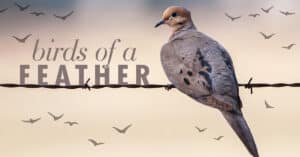One Big Garden
Restoring Vegetation in the Mount Shasta Region…
You can think of the slopes of Mt. Shasta as a big garden with a heck of a lot of shade trees, a garden with bee-attracting plants like the redbud shrub and the bright-pink-flowered Shasta penstemons; the wild plum trees that provide food for bears; the black oaks whose acorns are a traditional food source for Native Americans.
That’s pretty much the way Brenna Montagne looks at Mt. Shasta. She’s the U.S. Forest Service’s botanist for the Mount Shasta region.
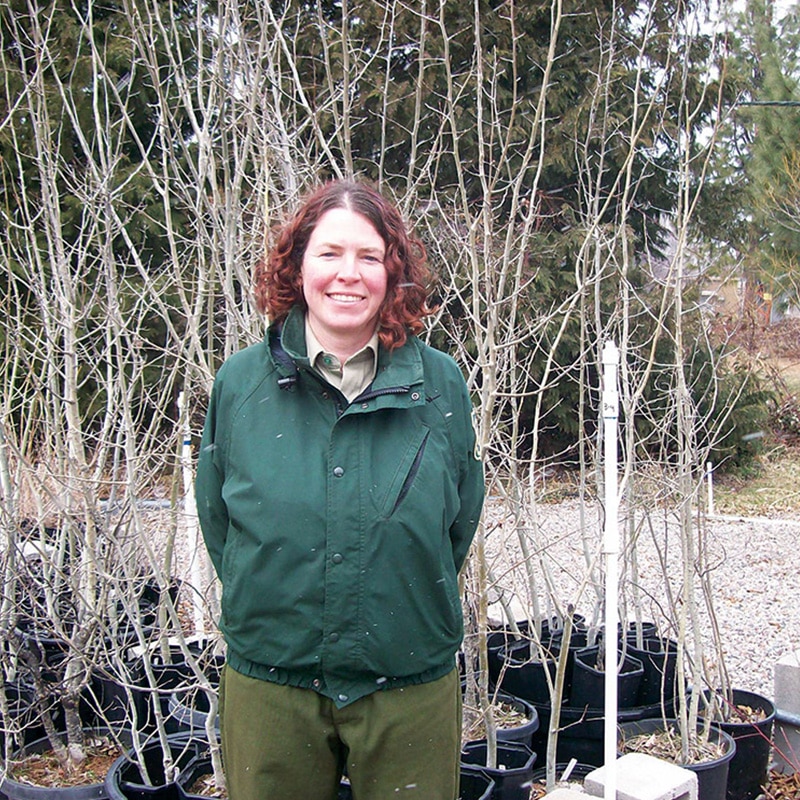
It’s her job to go in and restore wildlands that have been trampled by visitors; to restore riparian vegetation after flood events; to plant small trees and shrubs after a prescribed burn in the forest.
It starts out in back of the Forest Service Ranger Station in Mount Shasta, with an industrial-size refrigeration unit where native grass seeds are stored; and in an old refrigerator near Montagne’s office where the wild plum, native grape and spice bush seeds are stored; in a large greenhouse with its black oak saplings, the young penstemon shrubs and snow drop bushes; in an adjoining nursery with its live oak, black oak, incense cedar, Douglas fir and ponderosa pine saplings.
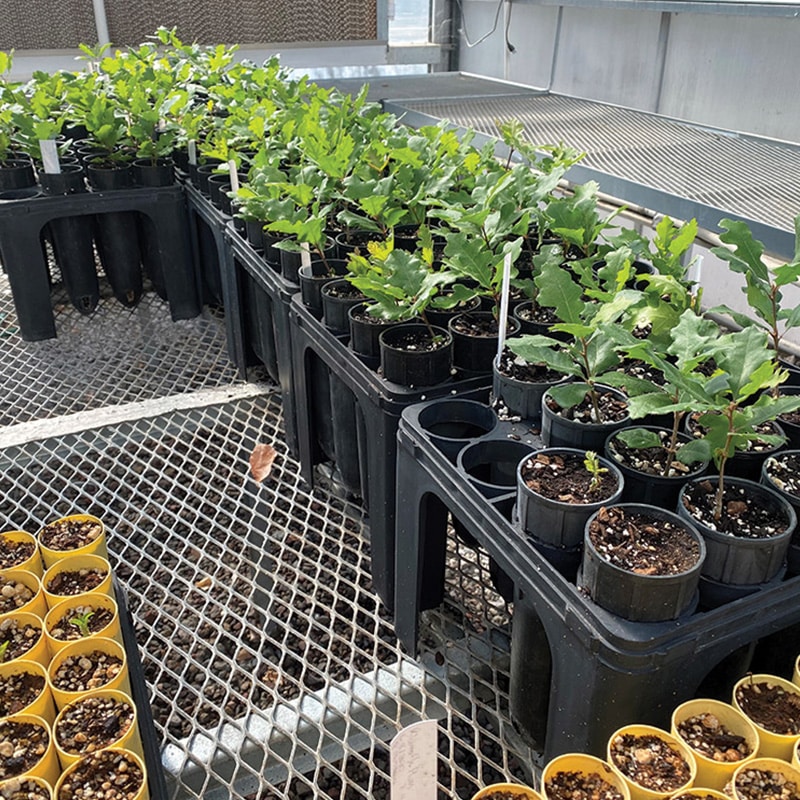
The restoration work on Mt. Shasta goes back to 1993 at Panther Meadows, where much of the vegetation had been trampled to bare ground by the crush of visitors.
With a grant from the McConnell Foundation, the Forest Service was able to build a greenhouse and start propagating the penstemons and yellow-flowered arnicas that would renew the living landscape at the Meadows. It’s a fragile landscape, so no heavy equipment was used: It was all spade and shovel work.
A few years later, when heavy rains and flooding wiped out much of the forest on Forest Service land near La Moine, workers, including Montagne’s predecessor, Rhonda Posey, lugged 20-pound pots of willow saplings up and down the hillside to restore the forest and fight erosion. When Tauhindauli Park was being established in Dunsmuir, the Forest Service brought in dogwoods, willows, and a variety of riparian plants from its greenhouse and nursery.
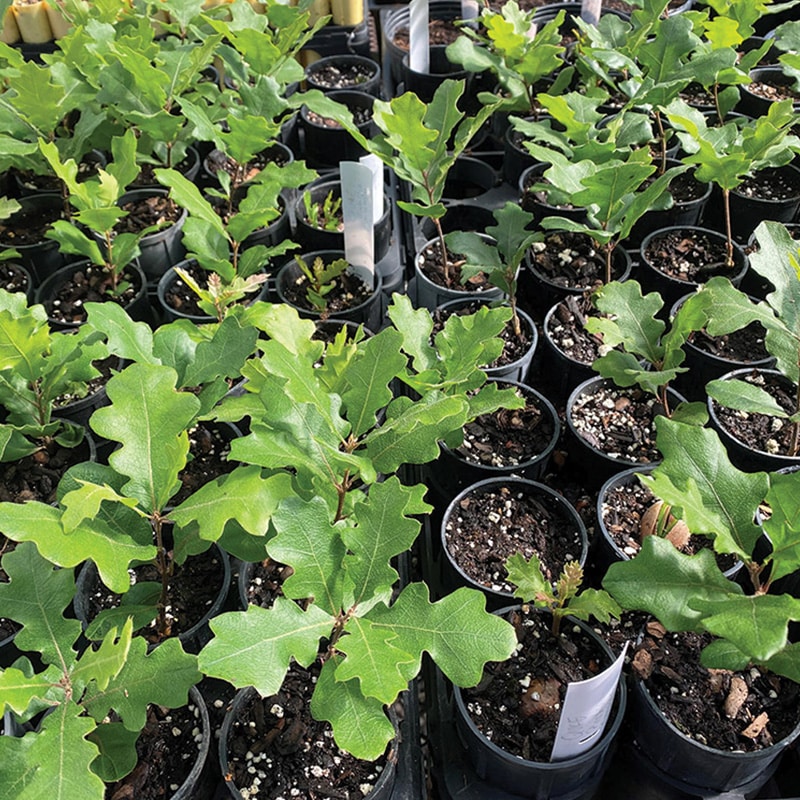
Montagne, who took over management of the greenhouse and nursery from Posey two years ago, recently tackled a manzanita restoration project at Shasta Lake. Upcoming is restoration work at McBride Springs Campground on the lower slopes of Mount Shasta and, after some prescribed burns, at campgrounds along the McCloud River.
For help with the shovel and spade work, Montagne has several seasonal workers for the main fall planting season, with some assistance from Forest Service fire crews. When Posey was in charge of restoration efforts, she remembers letting students from a local elementary school broadcast native grass seeds on their field trips. These days high school students recruited for the federal government’s Youth Conservation Corps spend part of their summer at Mount Shasta harvesting seeds from native plants and weeding out non-native plants like the Scotch broom and star thistle. The students do all this work with hand tools.
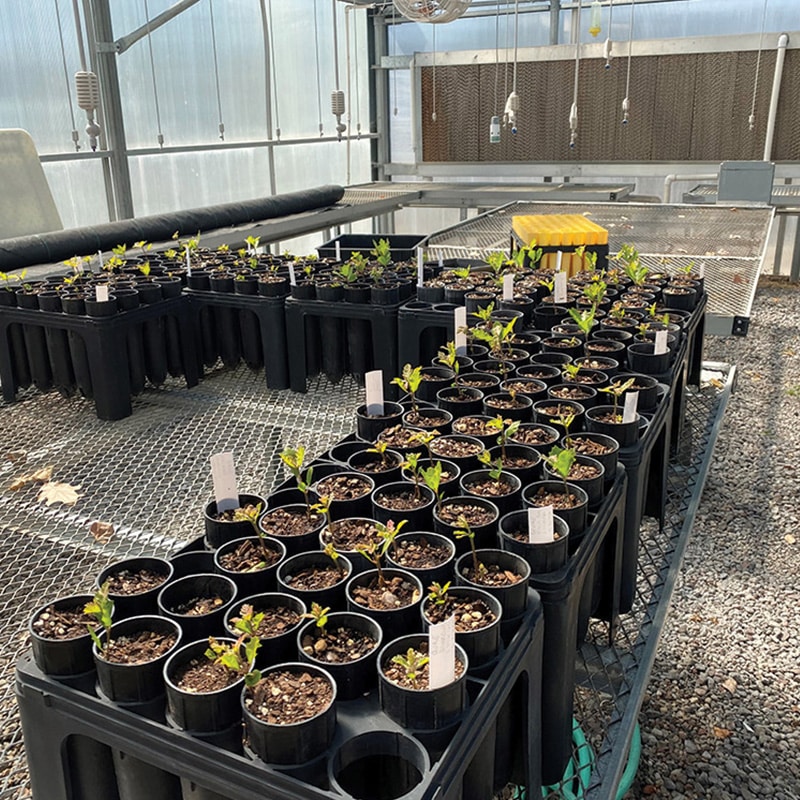
Montagne bristles at the thought of all those unwelcome plant invaders. “It takes lots of painstaking labor to get those things out,” she says. She’s a big supporter of the annual invasive weed-pulling event held in Mount Shasta each spring.
After the restoration work is done at each location, there’s two years of hand watering the newly planted vegetation to make sure it gets a good start. And then it’s up to Mother Nature to do her thing, keeping that one big garden on the mountain thriving with a wild bounty of vegetation. •



